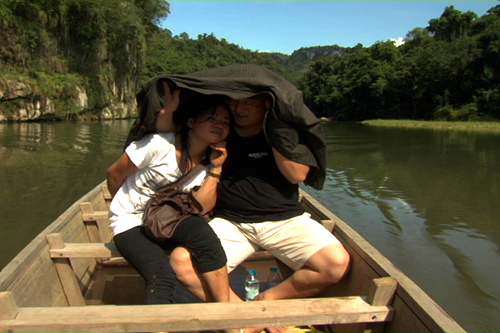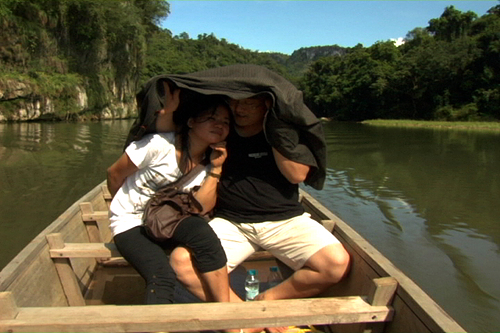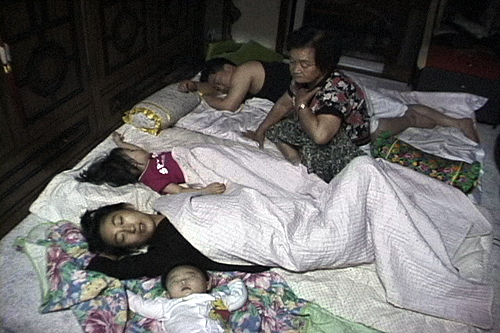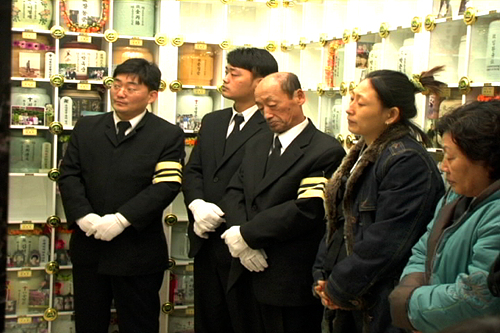11th(2009)
- Opening Film (1)
- New Currents (24)
- Queer Rainbow: A Special Everyday Affair (16)
- Girls on Film: Girls on the Road (15)
- Open Cinema (4)
- Women’s Labour and Poverty (5)
- On Aging (13)
- Asian Short Film & Video Competition (18)
- Media Workshop for Women Migrants: Video Daiary of Our Own (9)
- Documentary Ock Rang Award (1)
A Nice Place
CHO Uhn, PARK Kyoung-tae
- Korea
- 2009
- 90min
- DV6mmdigital
- color
- Documentary
SYNOPSIS
Synopsis
Beginning with a slide show of images of Seoul’s representative hillside slum before, during, and after demolition, the film introduces a family living in that area. The grandmother does public labor; the son is a day worker in construction sites; the eldest grandson is a craftsman in Uljiro but dreams of becoming a missionary. The younger grandson that works as a waiter in a Chinese restaurant should have a dream but claims that he doesn’t, and the granddaughter Eun-ju has had another baby because she did not have the money for abortion. After the demolition, the family moves to a rental apartment in Sanggye-dong.
Program Note
A Nice Place is a documentary film that tracks a family for twenty-two years, from their forced removal from Sadang-dong before the 1986 Asian Games. The film starts with Jung Geum-sun’s testimony and the slides of Sadang-dong’s demolition. After the forced removal that even involved Baekgol-dan (the plain-clothes police force specializing in suppressing demonstrations), Jung Geum-sun moves to the rental apartment in Sanggyedong with her eldest son and three grandchildren. Having gone through all sorts of rough jobs and worked as a public laborer in her last few years, Jung Geum-sun lived in the Sanggye-dong rental apartment until she died. A Nice Place is made of photos, voice recordings, and images from diverse types of movie camera. Since the sources vary greatly, it would have been difficult to maintain an even tone; however, the film demonstrates the power that comes from the long time spent in waiting for and capturing one object. Moreover, the documentary testifies in vivid detail how the vicious cycle of urban poverty is inherited. A dispersed person who came down south during the Korean War, Jung Geum-sun had already gone through many forced demolition before Sadang-dong. Her son and her eldest grandson got marriages respectively a Chinese-Korean woman and a Filipino woman. Through the lives of the three women, the film reveals that the lives of poor women are made up of dispersal and migration. The history of Jung Geum-suns family overlaps with the aspects of Korean modern and contemporary history, such as the separation of Korea, developmentalist dictatorship, and marriage migration. Even today, renovation and demolition go on under the sophisticated title ‘new town’ project, and the circle of poverty for those that are pushed away from their homes still remains intact. A Nice Place is a story of a family; at the same time, it has a vivid ring and wavelength that reaches beyond the boundary of that one family. (KWON Eun-sun)
PROGRAM NOTE
Synopsis
Beginning with a slide show of images of Seoul’s representative hillside slum before, during, and after demolition, the film introduces a family living in that area. The grandmother does public labor; the son is a day worker in construction sites; the eldest grandson is a craftsman in Uljiro but dreams of becoming a missionary. The younger grandson that works as a waiter in a Chinese restaurant should have a dream but claims that he doesn’t, and the granddaughter Eun-ju has had another baby because she did not have the money for abortion. After the demolition, the family moves to a rental apartment in Sanggye-dong.
Program Note
A Nice Place is a documentary film that tracks a family for twenty-two years, from their forced removal from Sadang-dong before the 1986 Asian Games. The film starts with Jung Geum-sun’s testimony and the slides of Sadang-dong’s demolition. After the forced removal that even involved Baekgol-dan (the plain-clothes police force specializing in suppressing demonstrations), Jung Geum-sun moves to the rental apartment in Sanggyedong with her eldest son and three grandchildren. Having gone through all sorts of rough jobs and worked as a public laborer in her last few years, Jung Geum-sun lived in the Sanggye-dong rental apartment until she died. A Nice Place is made of photos, voice recordings, and images from diverse types of movie camera. Since the sources vary greatly, it would have been difficult to maintain an even tone; however, the film demonstrates the power that comes from the long time spent in waiting for and capturing one object. Moreover, the documentary testifies in vivid detail how the vicious cycle of urban poverty is inherited. A dispersed person who came down south during the Korean War, Jung Geum-sun had already gone through many forced demolition before Sadang-dong. Her son and her eldest grandson got marriages respectively a Chinese-Korean woman and a Filipino woman. Through the lives of the three women, the film reveals that the lives of poor women are made up of dispersal and migration. The history of Jung Geum-suns family overlaps with the aspects of Korean modern and contemporary history, such as the separation of Korea, developmentalist dictatorship, and marriage migration. Even today, renovation and demolition go on under the sophisticated title ‘new town’ project, and the circle of poverty for those that are pushed away from their homes still remains intact. A Nice Place is a story of a family; at the same time, it has a vivid ring and wavelength that reaches beyond the boundary of that one family. (KWON Eun-sun)
Director
-
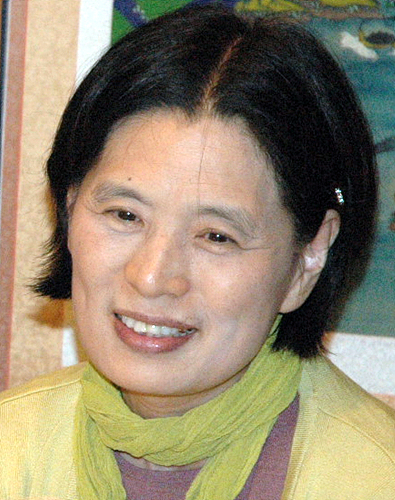
CHO UhnCHO Uhn
Born in 1946, director Cho Uhn is currently a professor of Sociology at Dongguk University. Although she mostly focuses on field research as a sociologist, she has also been an active participant in feminist writing and feminist activity.
-
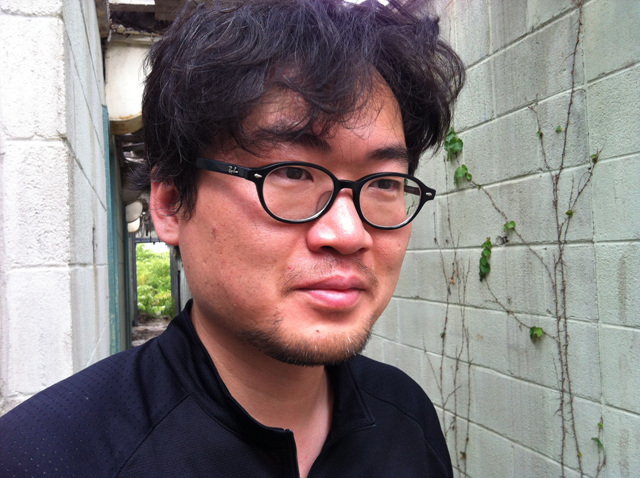
PARK Kyoung-taePARK Kyoung-tae
Graduated from Dongguk University with a master degree in Sociology. Since 2011, he’s studying film at Université Paris VIII. PARK Kyoung-tae has built up an intimate perspective on survivors of the camp sites through his documentaries Me and the Owl(2003) and There is(2006). Sadang-dong + 22 that he co-directed was presented at IWFFIS.
Credit
- ProducerCHO Uhn 조은
- Cinematography PARK Kyoung-tae, CHO Won-yeol, GOO Jae-mo, KIM Man-tae
- Editor LEE Eun-sue
- Music KIM Min-kyoung
- Sound PARK Sang-bum

